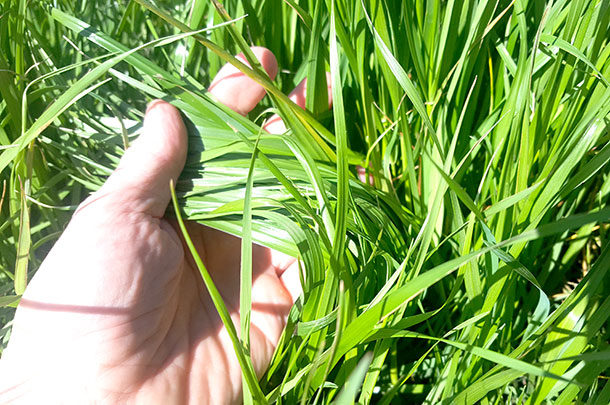A cool-season grass, annual ryegrass has very good forage quality for early grazing and is part of productive forage and grazing systems in many areas of the South. But it may not be the right choice for some pasture systems, says Dirk Philipp, associate professor of animal science and a forage researcher for the University of Arkansas System Division of Agriculture.
“The typical annual ryegrass can be a menace in newly established pastures or that producers like to renovate or keep in specific perennial forage crops,” Philipp says.
Annual ryegrass is prolific, Philipp says, because it will grow vigorously in spring to complete its annual life cycle. Also, Arkansas’ climate is perfect for it, and it creates vast seed banks that will persist for years or even decades.
“Annual ryegrass can be a problem in all kinds of pastures with either cool-season or warm-season grass,” Philipp says.
To control annual ryegrass in existing fescue fields, Philipp says stock early to prevent seedhead development. “Short-term, heavy stocking may help reduce ryegrass forage mass,” he says.
Philipp says avoid overgrazing these fields because it may result in weakened fescue stands that are not ready for heavy grazing. That could result in gaps that could be populated by weeds or the unwanted ryegrass.
In newly established fescue pastures, Philipp recommends brush-hogging to keep the fast-growing annual ryegrass from growing tall and developing seedheads.
In bermudagrass fields, Philipp says there’s normally a window in March and early April when the bermudagrass is dormant and annual ryegrass can be chemically controlled. That window may be shorter in areas of the South where winters are mild.
Philipp says annual ryegrass may not be a problem in grazed bermudagrass pastures because the bermudagrass is competitive. But in dedicated hay operations, annual ryegrass is undesirable, especially when the seedheads show up in hay baled in June or later.
When establishing new perennial pastures, Philipp recommends:
- Keep track of the history of your field’s uses and forages.
- If selecting a field for a specific pasture, keep that history in mind.
- Annual ryegrass seed is viable for a long time, so be prepared for ryegrass to show up after tilling or disking.
- If a ryegrass problem is known, field preparation may have to be initiated 12 months before the anticipated planting date to minimize ryegrass occurrence during the year of establishment.

Fred Miller is a science editor for the University of Arkansas System Division of Agriculture .
PHOTO: Annual ryegrass can easily be identified by its shiny leaf backside. Photo by Dirk Philipp, courtesy of the University of Arkansas System Division of Agriculture.











